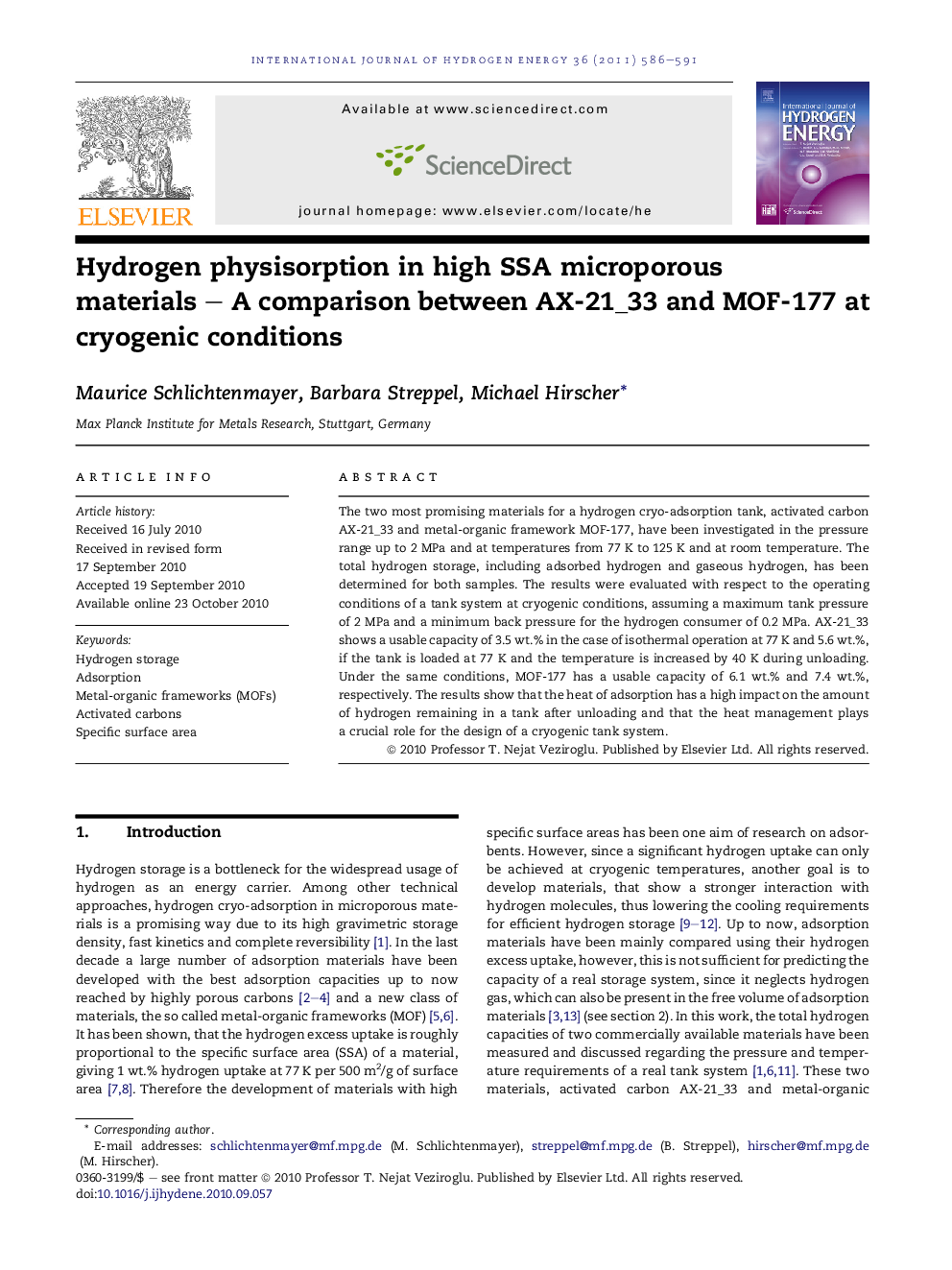| Article ID | Journal | Published Year | Pages | File Type |
|---|---|---|---|---|
| 1277810 | International Journal of Hydrogen Energy | 2011 | 6 Pages |
The two most promising materials for a hydrogen cryo-adsorption tank, activated carbon AX-21_33 and metal-organic framework MOF-177, have been investigated in the pressure range up to 2 MPa and at temperatures from 77 K to 125 K and at room temperature. The total hydrogen storage, including adsorbed hydrogen and gaseous hydrogen, has been determined for both samples. The results were evaluated with respect to the operating conditions of a tank system at cryogenic conditions, assuming a maximum tank pressure of 2 MPa and a minimum back pressure for the hydrogen consumer of 0.2 MPa. AX-21_33 shows a usable capacity of 3.5 wt.% in the case of isothermal operation at 77 K and 5.6 wt.%, if the tank is loaded at 77 K and the temperature is increased by 40 K during unloading. Under the same conditions, MOF-177 has a usable capacity of 6.1 wt.% and 7.4 wt.%, respectively. The results show that the heat of adsorption has a high impact on the amount of hydrogen remaining in a tank after unloading and that the heat management plays a crucial role for the design of a cryogenic tank system.
